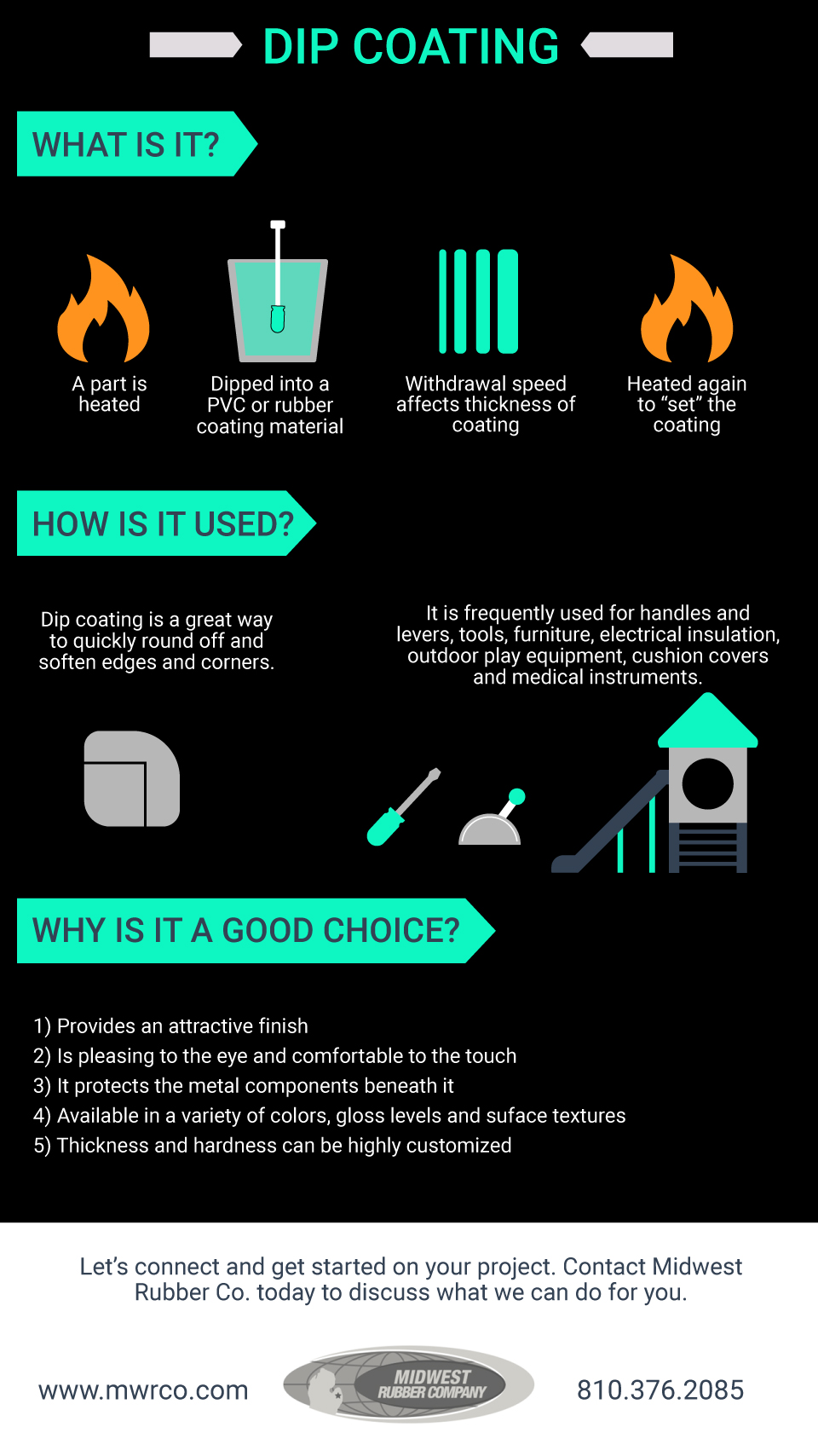
DIP COATING
Dip coating is very similar to dip molding in that they both involve immersing a part in liquid and removing it. However, it is not used to create new parts but rather to modify an existing metal part by adding a new layer of material to the outside of it. It begins by cleaning the item to ensure no debris or oils are present, which would weaken the bond. Then it is dipped – the thicker the desired coating, the more time the item is left in the liquid. Finally, the part is heated, and as it cools, the new outer layer solidifies.
Advantages of dip coating include:
- Versatility. An item can be dip coated to be any color; specialty finishes are also possible. The thickness of the coating can also be easily adjusted.
- Efficiency. It naturally involves little to no waste.
- Flexibility. Just about any part can be dip coated, from the most basic object to a form with numerous caverns.
- Ease. Dip coating only has a few steps and can be a simpler alternative to injection molding.
There are many applications for dip coating, and it’s a highly customizable technique. It is used for both industrial components and consumer goods, making it likely that you have at least one dip-coated item in your home or workplace. Here are some examples:
- Hand tools with rubber grips
- Storage racks, which are dip-coated to protect the metal
- Children’s toys, dip-coated for durability
- Plumbing parts that provide insulation
If you’re in need of dip coating services for your latest project, contact us today! We’ll work with you to make sure your parts turn out exactly as you need them.